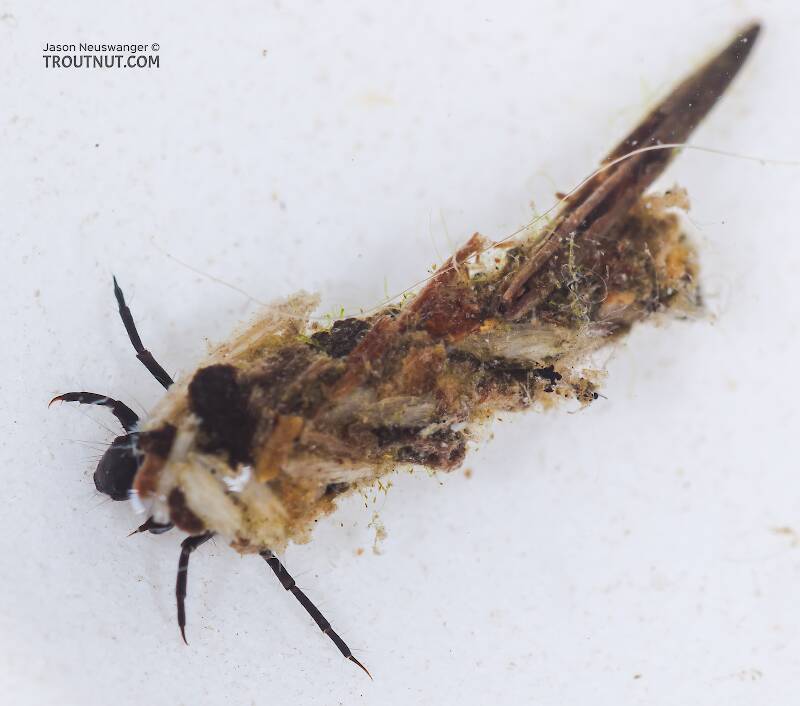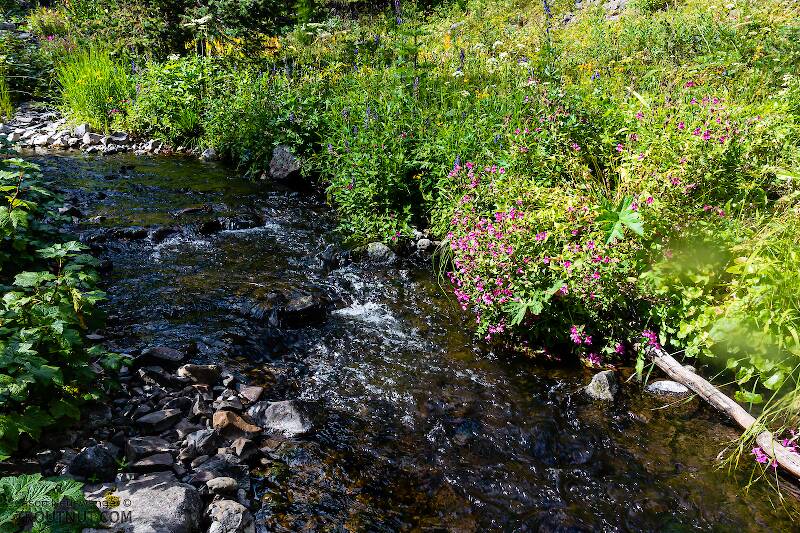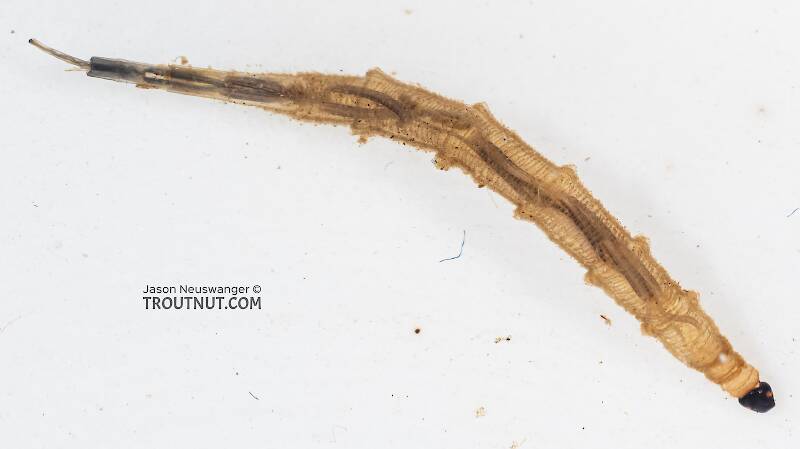
Blue-winged Olives
Baetis
Tiny Baetis mayflies are perhaps the most commonly encountered and imitated by anglers on all American trout streams due to their great abundance, widespread distribution, and trout-friendly emergence habits.
Featured on the forum

This seems to be a young larva of Limnephilus. Although not clear in the picture, several ventral abdominal segments have chloride epithelia.

Troutnut is a project started in 2003 by salmonid ecologist Jason "Troutnut" Neuswanger to help anglers and
fly tyers unabashedly embrace the entomological side of the sport. Learn more about Troutnut or
support the project for an enhanced experience here.
True Fly Family Ptychopteridae (Phantom Crane Flies)
See Tipulidae for details about craneflies. This family is not known to differ from them in any ways important to anglers except appearance.
This family has evolved a really unusual feature for an insect: its legs also serve the function of wings. The tibiae are greatly enlarged and help catch the wind. The legs usually have white tips, making them very easily identifiable in flight. There is a ghostly look to a dark, sparse insect flying around the stream, usually alone, with the fixed bright white points of its leg tips surrounding it like a halo.
This family has evolved a really unusual feature for an insect: its legs also serve the function of wings. The tibiae are greatly enlarged and help catch the wind. The legs usually have white tips, making them very easily identifiable in flight. There is a ghostly look to a dark, sparse insect flying around the stream, usually alone, with the fixed bright white points of its leg tips surrounding it like a halo.



